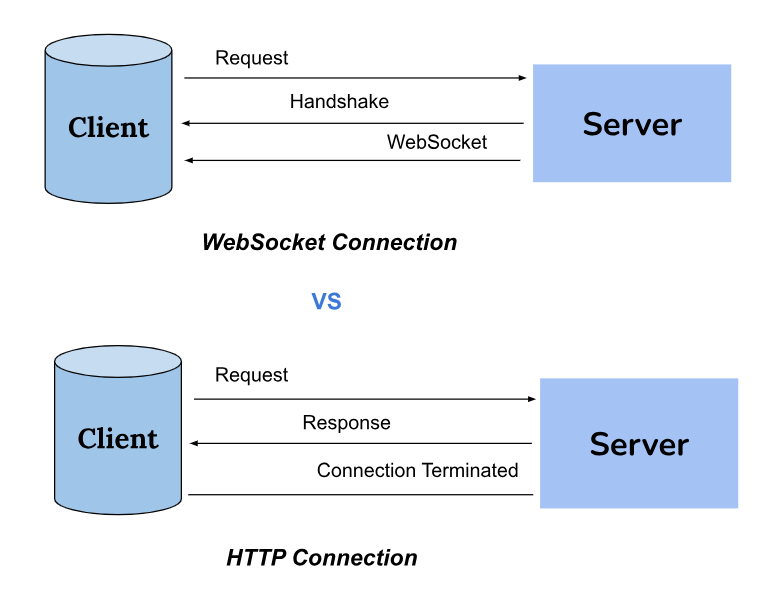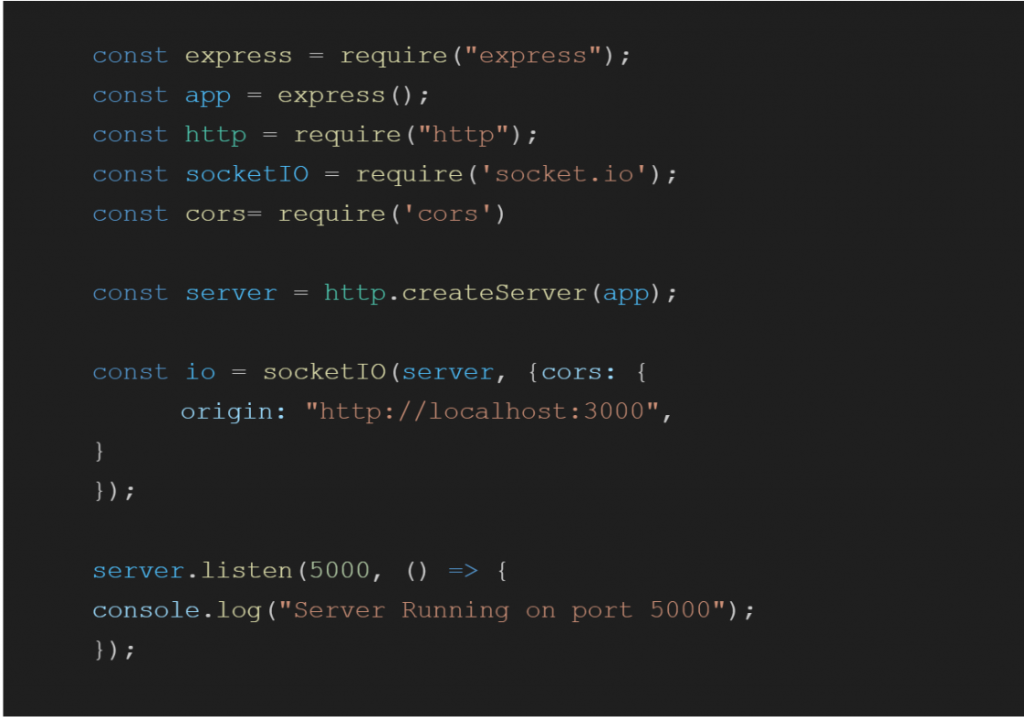Understanding WebSockets with Socket.io
Introduction to WebSockets
WebSockets is a communication protocol that enables real-time bi-directional connections between server and client. It provides the ability to the server to provide updates to the client without the client explicitly requesting the server. WebSockets work internally by upgrading the HTTP connection to a WebSocket connection. This Upgrade header signifies the WebSocket handshake.

Features of WebSockets –
● Low Latency – In WebSockets, the connection is alive unless either the client or server terminates it, unlike HTTP/HTTPS protocol that follows a basic client-server model where the server sends a response only after receiving a request from the client and the connection gets terminated by itself after receiving the response.
● Efficiency – In HTTP/HTTPS protocol, the data is fetched via the Polling technique i.e., the client consistently sends requests to the server until it updates, which is not an optimal way to communicate in real-time as it creates much more load to the server. Web Sockets use a streaming technique where the client listens continuously with no external data request from the server. This reduces the load on the server as compared to the long polling technique.
● Real-Time updates – WebSockets are well-suited for real-time applications like applications and trading platforms as they can support continual data transmission. They are also used in collaborative editing tools like Google Docs, where changes made by different users need to be synchronized. Thus, it is an optimal protocol for such real-time updates use cases where bi-directional communication is crucial.
What is Socket.io?
Socket.io is an event driven library that helps in creating bi-directional communication in real time web applications by using websockets. Since this library is built on top of web sockets it provides a low-latency communication channel.
Building a Chat App using Socket.io –
Building an Express server with Socket.io:

Handling Socket.io connections and message-sending functionality on the server side:
Here, ‘io’ is an object that represents the Socket.IO server and ‘io.on’ is an event listener that is used to listen and handle different events that occur during the lifecycle of a web socket connection. The provided callback function to the event listeners is executed whenever an event is triggered.

Integrating Socket.io on the frontend:

Running the Chat Application:
Run both the server and the React app, open multiple browser tabs, and navigate to ‘http://localhost:3000′ to test the real-time chat functionality. Messages sent from one tab will be broadcasted to all the other tabs as well; this signifies the real-time communication functionality achieved using web sockets.
Conclusion
Thus, WebSockets are an important paradigm in building interactive, dynamic, and real-time applications on the web. The seamless, low-latency communication facilitated by WebSockets enhances the user experience significantly by minimizing the need for frequent HTTP requests and enabling instant data exchange. Though they might not completely replace the HTTP connection, they do offer a number of advantages over the conventional communication techniques in some use cases.
Check out our other blog posts for more insights. If you still have any questions, comment and join the discussion.

